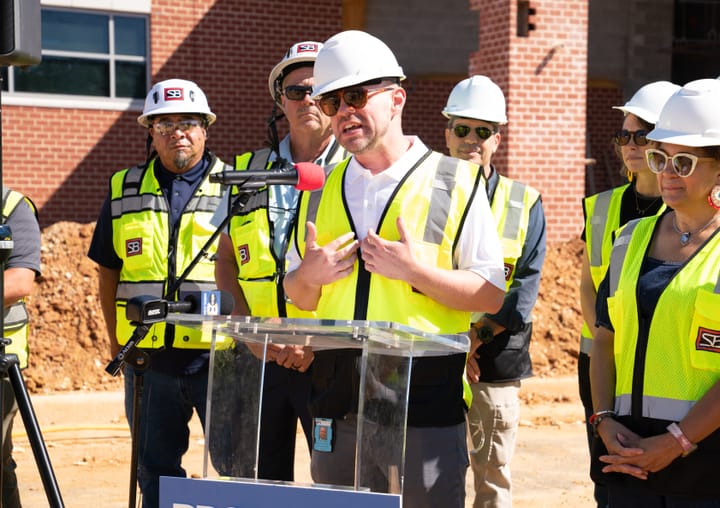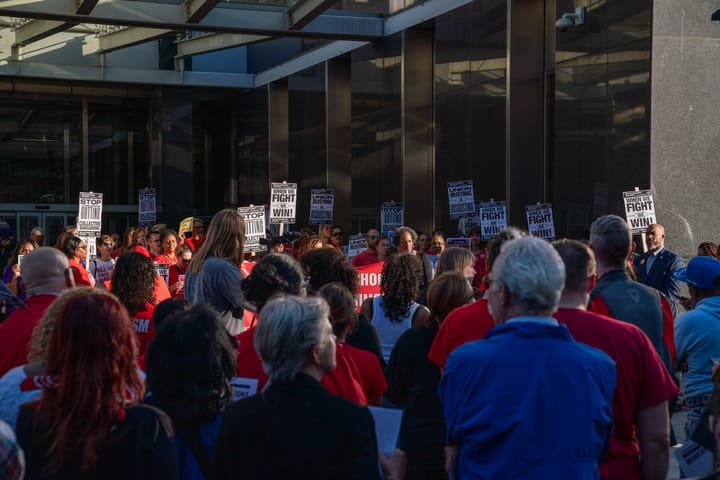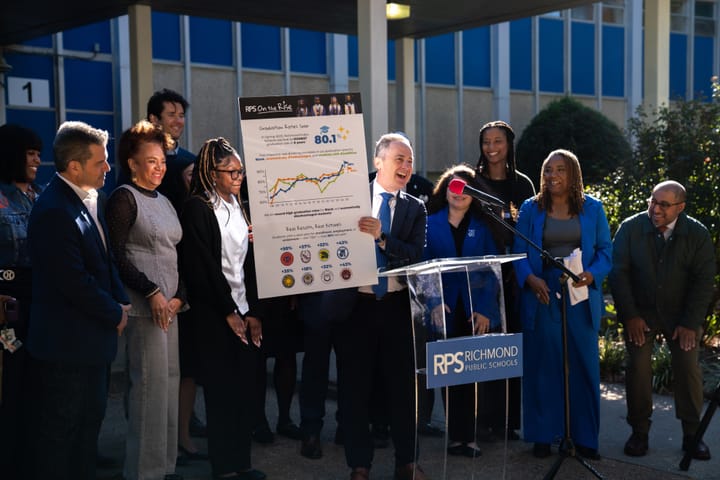
State budget proposals include two key RPS priorities: more funding for staff and school construction
Richmond Public Schools may not get everything it wants from the General Assembly this year, but new state budget proposals released last week include two of the division’s key priorities: more funding for support staff and school construction.
Under the spending plans put forward by the House of Delegates and Senate Sunday, the state would lift a Recession-era cap on how many support staff the state will fund in each school division, as well as put hundreds of millions more toward school construction and modernization.
Both proposals will still have to make it through what are likely to be difficult budget negotiations between the narrowly Democratic-controlled General Assembly and Republican Gov. Glenn Youngkin to go into effect. On Tuesday, RPS Chief Engagement Officer Danielle Greene-Bell warned the Richmond School Board that because the House and Senate plans eliminated many of Youngkin’s educational priorities, such as greater funding for lab schools, “we can expect him to have some sort of counterproposals.”
Still, the inclusion of the two priorities sparked celebration from the board and division officials — particularly over the legislature’s agreement to eliminate the support staff cap.
Universally hated by Virginia school divisions, the cap was put in place in 2009 as a cost-cutting measure and limits the number of support staff — a broad category that includes most administrative, technical, clerical, maintenance and instructional aide jobs — the state will fund.
“These are really the folks that help our students succeed, everything from bus drivers to teacher aides to interpreters,” said Carol Bauer, president of the Virginia Education Association.
Eliminating the cap has long been a goal of Richmond schools, which calculate it led to the loss of $47 million in state funding between 2011 and 2021.
“As much as we need the staff that are actively engaged in our classroom, I think it’s equally as important that we have paraprofessionals, counselors, custodians, the things that make our classrooms run,” said Richmond School Board Chair Shavonda Fernandez.
The cuts affected far more than hiring. Because most divisions considered many of those roles critical to their operations, they “tried to keep as many of those support staff as possible and just had to eat the cost locally,” said Matthew Stanley, RPS’ director of advocacy and outreach, during a webinar on legislative priorities this December.
That often meant cutting costs elsewhere: a lengthy 2023 report on state education funding by Virginia’s Joint Legislative Audit and Review Commission found that because of the way that funding is calculated, setting a cap on support staff “simply reduces total basic aid funding, which funds support, instruction, and all other division operations.”
While the legislature has taken steps in recent years to raise the cap from 20 to 24 support staff for every 1,000 students, none of those actions brought it back up to the statewide “prevailing ratio” of 26 staff per 1,000 students that existed prior to the Recession.
Most of the hesitancy to get rid of the cap was financial, say legislative watchers. Its removal would cost roughly $223 million this year and then require hundreds of millions of dollars in future years.
Also earmarked for major spending in the House and Senate budgets was school construction. Following a December proposal from Youngkin, the Senate would put $290 million into a statewide funding pool to help local governments address aging buildings, while the House would devote $310 million to the aim.
Richmond, with its aging school buildings, has been a significant recipient of such funding in recent years, taking in $8.6 million in construction assistance grants for projects at John Marshall High, Richmond Success Academy (the former Richmond Alternative School), Henderson Middle, J.L. Francis Elementary and Fox Elementary, as well as $20 million for a planned new technical high school.
Funding complaints
Richmond has been less successful with some of its other priorities, including additional changes to how Virginia calculates how much funding it should give local divisions.
It’s not unusual for school districts to petition lawmakers for more money. But their arguments got a powerful boost from the 2023 JLARC report that found the state has routinely underfunded local divisions in terms of both national and regional averages and what state models say is needed for students to meet educational standards.
Among the report’s findings was that school divisions collectively spend billions of dollars more each year than state formulas indicate they need, with local governments making up the majority of the shortfall.
“A lot of our school divisions are receiving less funding than they should,” said Shawn Smith, a spokesperson for Chesterfield County Public Schools during the December webinar.
“The current funding model inadequately addresses the needs of higher-need students,” wrote Superintendent Jason Kamras and former School Board Chair Dawn Page in a letter to legislators this September. “We are hopeful that when you address the recommendations, particularly those related to the needs of students requiring additional services, you will ensure the state fully funds its obligations.”
The JLARC report found Richmond was facing several particular challenges.
One concerned the measure the state uses to calculate the local population’s ability to pay. Known as the local composite index, this measure can shift substantially if factors like population or real estate values see big swings, leading to sudden drops in state funding.
That occurred in the city during COVID, when higher-earning residents of other cities relocated to Richmond. JLARC noted that while the city’s population grew 1.8% over this time, property values rose 16.8% and income 24.8%. School enrollment actually dropped 1.3%. The result was that state education funding fell $6.75 million.
How the state weights population size and student enrollment in calculating local governments’ ability to pay may also be putting Richmond at a disadvantage. JLARC found the current system “tends to be more favorable to suburban school divisions with large and faster growing student populations, and less favorable to urban and rural areas with declining or stagnant student populations (even if they have growing general populations).”
Nor does the state’s funding formula accurately take into account regional differences in labor costs, JLARC said.
Right now, the formula allots more funding to 17 Northern Virginia school divisions to account for the fact that salaries are higher in that region. However, JLARC found that a number of other localities, including Richmond, also have above-average labor costs but don’t get any adjustment to their funding — even if, in some cases, their costs are higher than those faced by the some of the divisions that do get the adjustment.
Richmond leaders have acknowledged it will likely take several years for lawmakers to carry out many of the recommendations JLARC put forward to fix the formulas. In the meantime, they pushed for several short-term changes, such as calculating the local population’s ability to pay for education over a three-year window in order to prevent sudden big funding drops.
That proposal hasn’t made it into any of this year’s spending plans. But 7th District School Board member Cheryl Burke on Monday still took an optimistic tone.
“They’re listening to JLARC,” she said.






